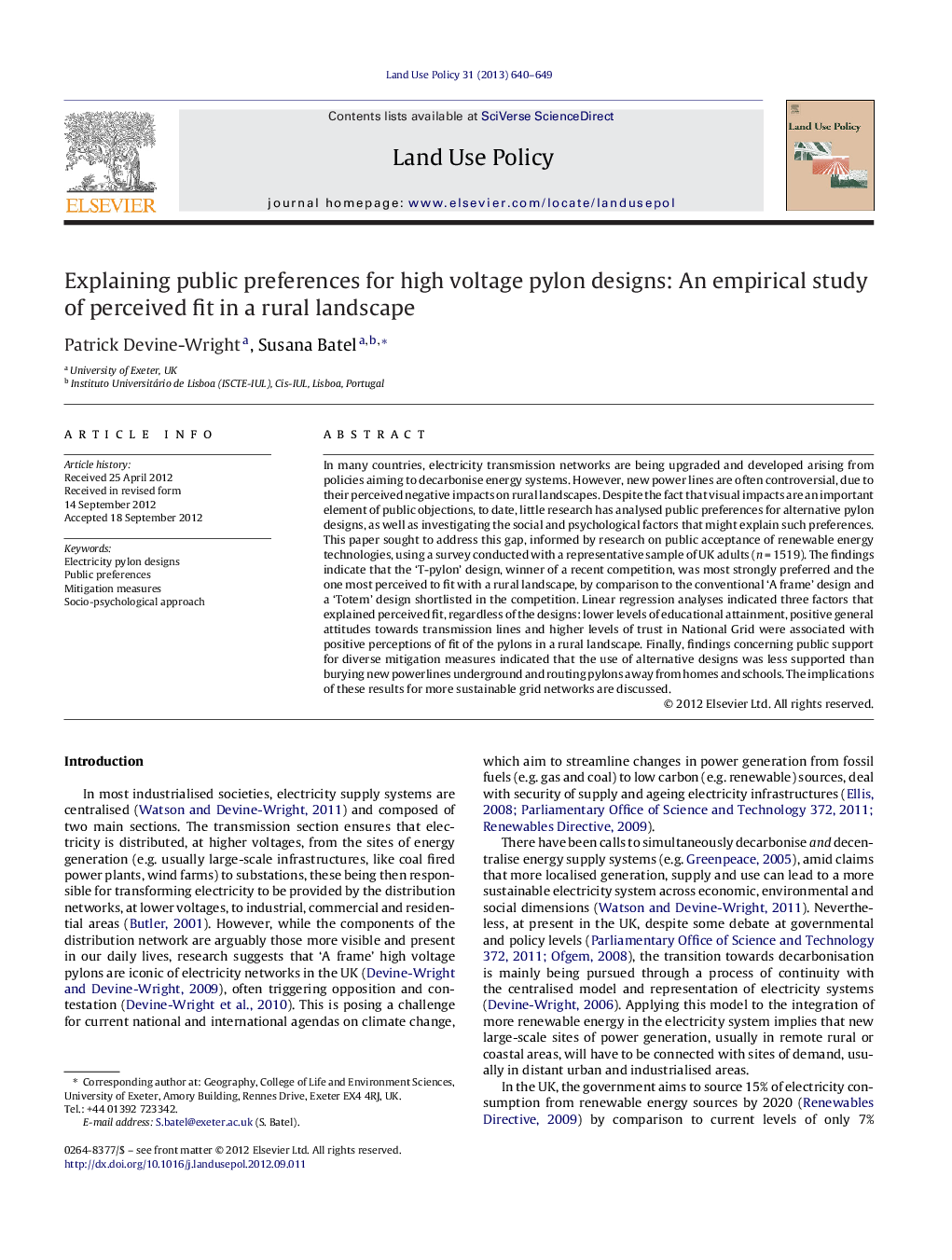| Article ID | Journal | Published Year | Pages | File Type |
|---|---|---|---|---|
| 93120 | Land Use Policy | 2013 | 10 Pages |
In many countries, electricity transmission networks are being upgraded and developed arising from policies aiming to decarbonise energy systems. However, new power lines are often controversial, due to their perceived negative impacts on rural landscapes. Despite the fact that visual impacts are an important element of public objections, to date, little research has analysed public preferences for alternative pylon designs, as well as investigating the social and psychological factors that might explain such preferences. This paper sought to address this gap, informed by research on public acceptance of renewable energy technologies, using a survey conducted with a representative sample of UK adults (n = 1519). The findings indicate that the ‘T-pylon’ design, winner of a recent competition, was most strongly preferred and the one most perceived to fit with a rural landscape, by comparison to the conventional ‘A frame’ design and a ‘Totem’ design shortlisted in the competition. Linear regression analyses indicated three factors that explained perceived fit, regardless of the designs: lower levels of educational attainment, positive general attitudes towards transmission lines and higher levels of trust in National Grid were associated with positive perceptions of fit of the pylons in a rural landscape. Finally, findings concerning public support for diverse mitigation measures indicated that the use of alternative designs was less supported than burying new powerlines underground and routing pylons away from homes and schools. The implications of these results for more sustainable grid networks are discussed.
► We examine public preferences for conventional and alternative pylon designs. ► The winning design in the RIBA competition was the most preferred. ► But undergrounding is a more acceptable mitigation measure than alternative designs. ► This highlights the need for public discussion of different models of power supply. ► And to consider the role played by socio-psychological factors in public preferences.
